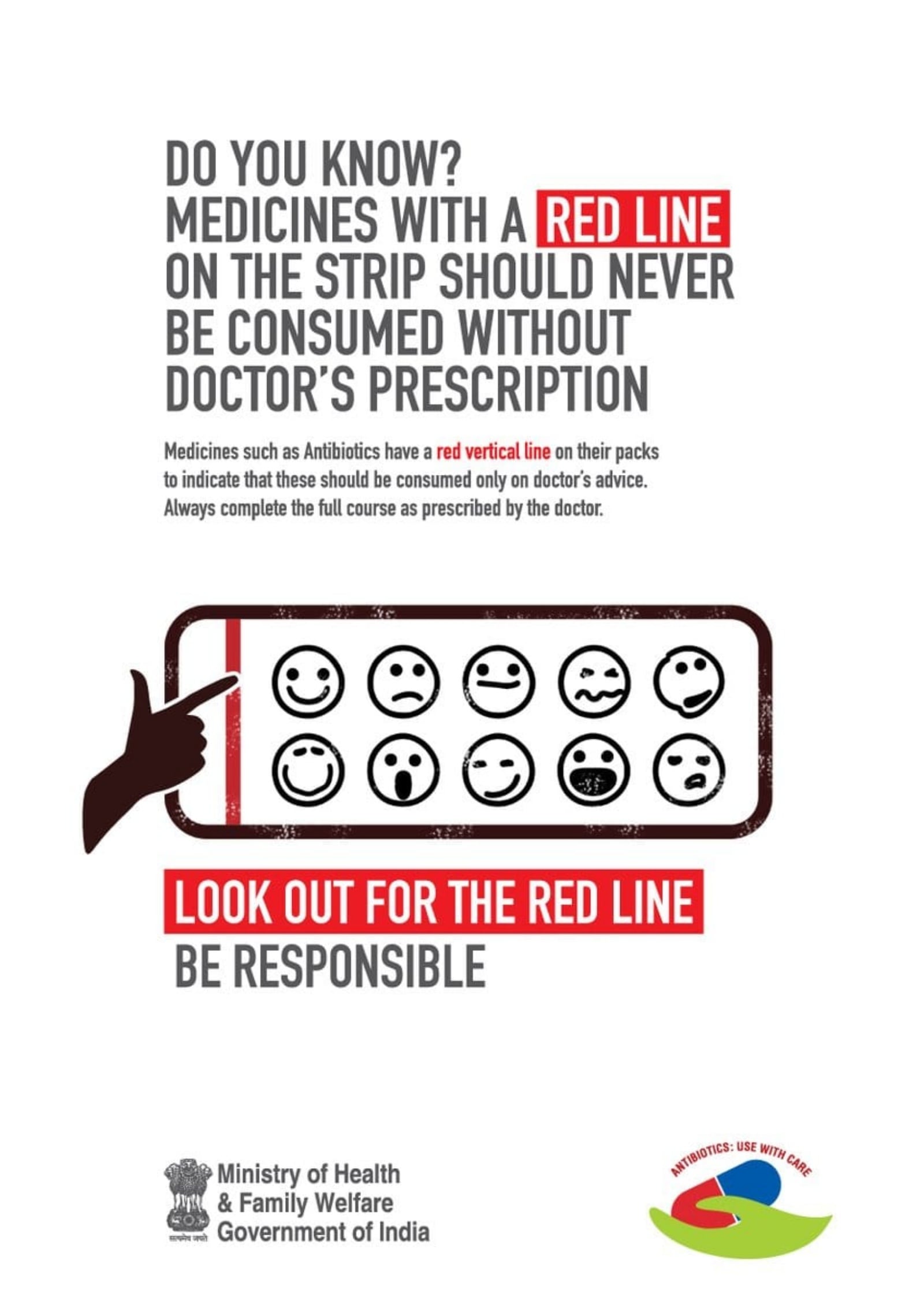📣 For more lifestyle news, click here to join our WhatsApp Channel and also follow us on Instagram
Why you must never ever consume medicines with a red line on the strip without doctor’s prescription
Taking red strip medication without doctor's evaluation can mask underlying health problems, cause drug resistance, or even lead to dangerous interactions.
 OTC medicines have blue vertical lines, while the riskier, prescription-only drugs are marked with red lines (photo: pexels)
OTC medicines have blue vertical lines, while the riskier, prescription-only drugs are marked with red lines (photo: pexels)Have you ever noticed coloured vertical lines on your medicine pack? This isn’t just a design strategy, but a government mandate. Pharmaceuticals are required to clearly distinguish over-the-counter (OTC) medicines from Schedule H/H1 drugs, which can only be purchased against a valid prescription.
OTC medicines have blue vertical lines, while the riskier, prescription-only drugs are marked with red lines. With more than 7,000 deaths annually resulting from incorrect medicines or dosages, which happen in India alone, this regulation is crucial for public safety. To understand why these red-marked medicines should only be consumed under medical supervision, we reached out to Dr Jagadish Hiremath, a public health intellectual. Here’s what he revealed:
1. What does the red vertical strip on a medicine actually signify?
Dr Hiremath says that the red vertical strip on a medicine pack is a ‘regulatory warning’ that the drug falls under the ‘Schedule H’ or ‘Schedule H1’ category as per the Drugs and Cosmetics Act. “These medicines are prescription-only, meaning they must be sold only with a valid doctor’s prescription. The red strip is a visual reminder for pharmacists and consumers that these drugs can have significant side effects or health implications if taken without medical supervision.”
2. Can you name some examples of medicines that have these red stripes?
Some of the common examples of red-striped medicines, as shared by Dr Hiremath, include antibiotics such as azithromycin and amoxicillin, steroids such as prednisolone, and certain anti-anxiety or sleep medications like alprazolam. Additionally, many cough syrups, hormonal pills, and painkillers also carry the red vertical strip.
“These are widely used medicines but require professional guidance because dosage, duration, and possible drug interactions vary from person to person,” he tells indianexpress.com.
 The red strip on medicines in India is mandated under Schedule H and H1 of the Drugs and Cosmetics Rules, 1945 (source: Twitter/ Ministry of Health)
The red strip on medicines in India is mandated under Schedule H and H1 of the Drugs and Cosmetics Rules, 1945 (source: Twitter/ Ministry of Health)
3. Why is it dangerous to consume these medicines without a doctor’s prescription?
Dr Hiremath explains that every prescription drug is designed to treat specific conditions under controlled dosage. Taking them without evaluation can “mask underlying health problems, cause drug resistance, or lead to dangerous interactions.” He quotes the examples of antibiotics whose unnecessary consumption can make future infections harder to treat, and steroids or hormonal drugs, which can disrupt natural body functions if misused.
4. What are the common side effects or risks of self-medicating with such drugs?
While side effects may differ across drug categories, Dr Hiremath points out that some of the most common symptoms include allergic reactions, gastric irritation, hormonal imbalances, and mood changes. Misuse can also lead to dependency, especially with sleep-inducing or anti-anxiety medicines. He cautions that “even something as simple as a painkiller can cause stomach ulcers or kidney issues if taken frequently without supervision.” Additionally, inappropriate use can also lead to dependency, especially with sleep-inducing or anti-anxiety medicines.
5. Can there be long-term consequences like organ damage, antibiotic resistance, or hormonal imbalance?
Dr Hiremath confirms that continuous misuse of prescription-only drugs can indeed cause serious health complications. Antibiotic overuse without medical guidance can lead to resistance making it difficult to treat future infections. Similarly, “incorrect usage” of steroids and hormonal pills can disrupt hormones, weaken bones, or damage the liver. “Some drugs can even strain kidneys or the heart over time, causing irreversible damage.” he further cautions.
6. Are there any myths or misconceptions about these drugs that people often have?
A common misconception, as per Dr Hiremath, is that if a medicine once worked for a symptom, it’s safe to reuse without consultation. “Many people assume that over-the-counter drugs are harmless, but that’s far from true,” he cautions, while debunking another myth that higher doses bring faster relief. “Prescription medicines are effective only under a qualified professional’s guidance.,” he concludes.
DISCLAIMER: This article is based on information from the public domain and/or the experts we spoke to. Always consult your health practitioner before starting any routine.
📣 For more lifestyle news, click here to join our WhatsApp Channel and also follow us on Instagram



- 01
- 02
- 03
- 04
- 05
























